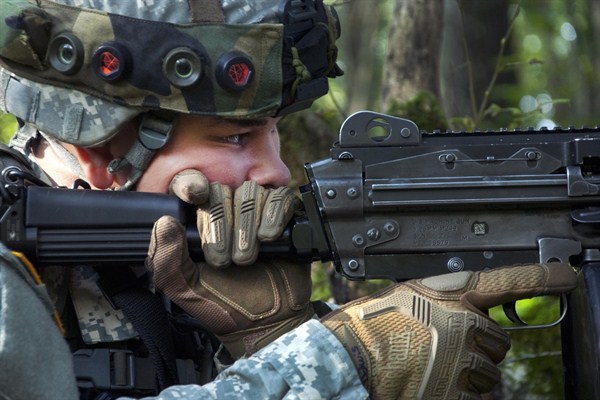Technology that will have a profound, potentially revolutionary impact on the U.S. military is on the way. Some innovations—like new materials, new fuels, automation, autonomy, new manufacturing methods, 3-D printing and better energy storage—will simply make military machines faster, lighter, smarter, cheaper and more accurate. But other technologies have the potential to change and enhance humans themselves.
“We want our warfighters to be made stronger, more aware, more durable, more maneuverable in different environments,” ethicist Patrick Lin wrote in the Atlantic in 2012. Neuroscience, biotechnology, nanotechnology, robotics, artificial intelligence and new drugs may pave the way for dramatic human enhancements, whether by external devices like exoskeletons; implants that expand endurance, cognitive ability and communication; or new drugs that enhance endurance, strength, perception and cognitive ability. “Somewhere in between robotics and biomedical research,” Lin argued, “we might arrive at the perfect future warfighter: one that is part machine and part human, striking a formidable balance between technology and our frailties.”
U.S. defense officials and military leaders are understandably interested in producing “super soldiers” using human-enhancement technology. When the United States became a global power in the 20th century, it looked for ways to exercise influence around the world and project military power with as few troops and American casualties as possible. To do this, Washington built networks of allies and partners; fielded ever-more precise weapons and better information systems; and stressed qualitative superiority over adversaries, both in human factors like training and leadership, and in technology. Qualitative superiority offset the advantages that America’s adversaries had, whether the numerical superiority of the Soviet Union during the Cold War or, more recently, the advantage that violent Islamic extremists gained by operating close to home and in familiar cultures.

